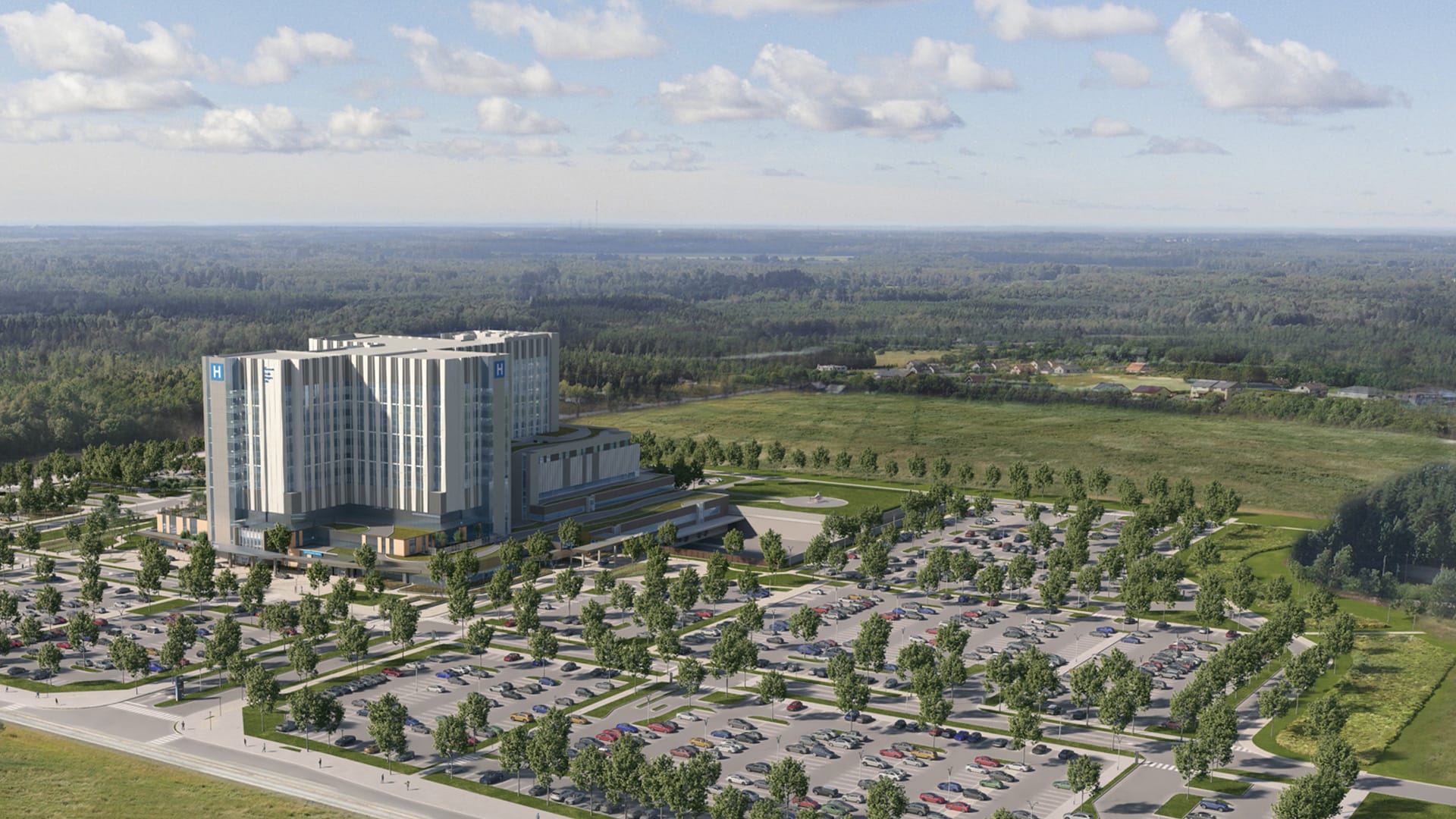When planning a hospital that will be operational for over a hundred years, the impact that it will have on the environment also needs to be considered as a priority. That is why Environmental Leadership was identified as one of the six project goals guiding the design of the new South Niagara Hospital (SNH).
A hospital that prioritizes the health of our people, and the planet.

As a goal, environmental leadership prioritizes a building design that supports the health of natural ecosystems at all levels - global, local and individual- and contributes towards reducing its carbon footprint, energy consumption and waste. There are many ways that the SNH project has worked towards achieving this goal.
The South Niagara Hospital has been registered with the Canadian Green Building Council, and is working towards achieving a LEED (Leadership in Energy and Environmental Design) Silver certification. LEED is the most widely used green building certification system in the world, and is a globally recognized symbol of sustainable achievement. It provides a framework for a healthy and efficient green hospital that will also significantly reduce the utility costs over the life of the building. LED lighting, heat recovery systems, water use reductions, metering and monitoring systems are only a few examples of the many features that will help reduce the building’s impact on the environment.
In 2024, the SNH project achieved WELL Precertification, and is on track to be the first WELL Certified hospital in Canada. Similar to LEED, WELL is a certification program that encourages a built environment where the priority is the health and wellness of the people who use it. Based on 10 concepts of building performance, features such as access to natural imagery and daylight, promotion of physical activity and more nutritious food offerings are examples of WELL features that have been incorporated into the building’s design. By prioritizing the use of raw materials and those that are less hazardous with lower emission rates (for example with flooring, insulation, sealants, paints, etc.), a healthier building for both the occupants and the environment is being created.
In addition to targeting LEED and WELL certifications, the SNH project incorporates design features that will help limit greenhouse gas emissions and support the project’s ambitious low energy use targets. Such features include the use of green roofs, high efficiency heating and cooling equipment, and advanced heat recovery (for example the waste heat from cooling will be used to heat the building, thermal energy from the exhaust air will be recovered to condition the incoming outdoor air to the building).
Likewise, in addition to the high efficiency building envelope with triple glazing throughout the building that reduces the space heating and cooling demands, the building atrium will feature large spans of windows providing greater access to natural daylight and views of the outdoors. To protect from solar glare and solar heat gain, these windows will be equipped with electrochromic glass, which uses servers and software automatically managing when and how the glass should tint through a combination of predictive and real-time inputs such as weather, location and cloud cover. This also helps the building conserve energy.
The landscape strategy for the 50-acre lot is one that prioritizes sustainability, biodiversity and a strong connection to Mother Earth. Approximately 15 per cent of the SNH site will remain as green space, including a protected wetland on the northwest corner that has been designated as an environmental conservation area. The hospital will feature many outdoor gardens, terraces and trails, in addition to green roofs on the building. The parking lot will be accented with numerous trees and plants to combat the asphalt, including drought-tolerant indigenous species. In 2020, volunteers harvested and replanted pin oak acorns and suitable trees from the thicket on the southeast corner of the site.
By prioritizing environmental leadership, we strive to create a healthier, more sustainable facility that will have a positive impact on both our people and the planet.
Read this article and more in the latest issue of the South Niagara Hospital Project Newsletter below.

